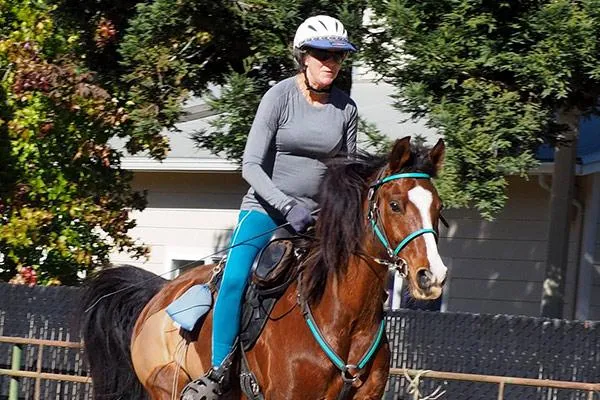
What if I Don't Have Hills?

Last week, a student emailed me in despair about her lack of hill access. How could she strengthen her horse's hindquarters without this time-honored fitness tool? Her property was so flat that she did not even have a ditch, a bump, or sloping driveway. Nothing, nada. Did this mean her horse would always be at a disadvantage?
I hear this concern more often than you might think. Whether you're in the Midwest plains, parts of Florida, or anywhere else blessed with pancake-flat terrain, the struggle is real. Hills are indeed wonderful for developing strength and cardiovascular fitness, but they're certainly not the only path to a well-conditioned horse.
It IS challenging to not have hills to condition on, but there ARE other activities you can pursue if you, like my student, live somewhere paper flat. The key is understanding what hills actually DO for your horse—they create resistance, encourage engagement of the hindquarters, and vary the workload—and then finding creative ways to replicate those benefits. In no particular order, these alternatives are as follows.
Deeper Footing
This comes with a caveat that it is suitable only for relatively fit horses and should be introduced in very short increments to avoid injury. Training on surfaces that are approximately 3" deep require the horse to exert more muscular effort. Think of it like running in sand versus running on pavement—the resistance makes every step count double.
Arena footing that's been freshly dragged, a sand paddock, or even carefully selected areas of your pasture after rain can provide this kind of workout surface. Start with just a few minutes at a walk, and watch your horse carefully for signs of fatigue. The beauty of deep footing work is that it automatically encourages the horse to lift through the back and engage the core muscles, much like hill work does. Used strategically, and with suitable warm-up, in small doses, it can be a valuable tool in your fitness arsenal.
Dragging Objects
It's no coincidence that most carriage horses have lovely toplines. The effort of dragging something behind them mimics to some degree the activity of extension muscles when traveling up a slope. While you do not need to train your horse to pull a buggy, there is great value in teaching him/her to drag a tire or a weighted block of some sort.

Start simple—an old tire works beautifully and is usually easy to come by. Begin with just the tire (no added weight), and let your horse get comfortable with the idea of pulling something behind them. Some horses take to it immediately, while others need time to adjust to the sensation and sound. Once your horse is relaxed about dragging, you can add weight gradually—sand bags also work well.
This exercise is particularly effective because it encourages the horse to push from behind rather than pull from the front, developing the exact muscle groups that uphill work targets. Plus, it adds variety to your training routine, which most horses appreciate.
Transitions within Gait
To perform changes of tempi within the gait, the horse needs to flex or propel from the hindquarters depending which direction the speed is going. Riding tempo variations at trot and canter offers a stimulus similar to undulating terrain. Keep in mind that the initial steps of each tempo change are where the effort resides, so transitions ridden closely together offer the most conditioning effect. Maintaining a tempo requires less effort than adjusting and shifting.
Think of it this way: when your horse climbs a hill, they naturally collect and push harder with each step. When you ask for frequent tempo changes within the gait, you're asking for that same collection and push repeatedly. Try shortening the trot for 10-15 strides, then asking for medium trot for the same number of strides, then back to collected. The constant "gear shifting" creates the kind of muscular demand that builds strength and suppleness.

This work also has the added benefit of improving your horse's responsiveness to your aids and developing better balance—skills that transfer beautifully to every aspect of your riding.
The Bottom Line
Don't let flat terrain discourage you from pursuing your fitness goals with your horse. While hills are certainly convenient, they're just one tool in a much larger toolbox. The key is being creative, consistent, and always prioritizing your horse's safety and gradual conditioning. Your horse can absolutely develop the strength and fitness needed for whatever discipline you pursue, hills or no hills.